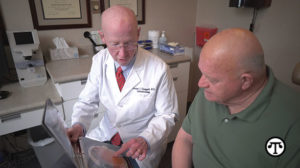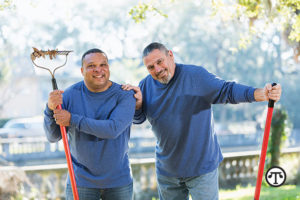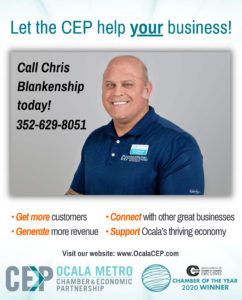Health, Home & Family
 (NAPSI)—Here’s something many parents may be surprised to learn: tooth decay is the most common preventable chronic disease among children in the United States.
(NAPSI)—Here’s something many parents may be surprised to learn: tooth decay is the most common preventable chronic disease among children in the United States.
The Problem
If left untreated, it can hurt more than your kid’s mouth. Your child’s physical and social development—as well as his or her school performance—can also be affected. More than 51 million school hours are lost each year due to dental-related illness. Kids with healthy teeth have fewer sick days and less distractions from learning.
The Good News
Parents may be surprised to find that getting their child’s teeth checked is easier and less expensive than they think. Under Medicaid and the Children’s Health Insurance Program (CHIP), essential health care services like preventative care and dental health are covered. For more than 20 years, CHIP has been instrumental in reducing the number of uninsured children to historic lows. Medicaid and CHIP cover more than one-third of all children in the U.S. and have helped insure 95 percent of the nation’s children—an estimated 35.5 million currently are covered. Continue reading
WOW my taste buds are working over time
Blue Highway Pizzeria
Let’s just make one thing clear: you won’t be blue when your tastebuds thank you for a delicious meal at Blue Highway. Fortunately, I work very close to the location on E. Silver Springs Boulevard and I grab lunch there about twice a month, but my husband’s work commute is about an hour from our home and this nearby treat so it’s literally a treat when he gets to enjoy dinner or a weekend lunch there.
Some of our favorites are their signature Blue Highway salad, complete with toasted pecans, feta, and Kalamata olives, and the Funghi pizza with mushrooms and parmesan and a white cream sauce. Those are two of our staples, but I also recommend their hot tuna panini with a side of herbed Tuscan fries, washed down with a hoppy IPA beer! Literally everything on the menu is delicious and we’ve always had excellent service to make it that much more enjoyable. And don’t forget to sign up for their rewards program, too. It’s a winner for dinner!
RRM
Ivy on the Square
Even if you’re not ravenous, it’s worth a visit to Ivy on the Square in downtown Ocala if only to admire the impeccable décor. It’s as if you walked onto a set at HGTV. But aside from the beautiful ambience, they offer, and deliver, the best old-fashioned, southern comfort food imaginable.
One of my favorite starters is the classic dish of fried green tomatoes. But the tomato caprese salad is nothing to pass up, either. Both are always on point and never disappoint. It’s almost impossible to choose a main course at lunch (or dinner) and I seem to stick to my tried and true Baked Krispy Chicken Salad. I mean, it’s eating healthy, right? A salad? But I have a feeling that the corny cornbread and croissant that’s served with it may not meet today’s keto friendly list of approved dishes, but it’s absolutely worth a cheat day to treat yourself to this.
From salads, to burgers, to wings, to seafood, Ivy on the Square has something for almost everyone. Even picky toddlers will crave their mac & cheese! It’s worth a visit…or several.
RRM
 (NAPSI)—People with low vision have blind spots that can make it difficult or impossible to drive, read or see faces. These impairments cannot be corrected by surgery or glasses. What’s more, too many are blind to the realization that much can be done to improve their quality of life.
(NAPSI)—People with low vision have blind spots that can make it difficult or impossible to drive, read or see faces. These impairments cannot be corrected by surgery or glasses. What’s more, too many are blind to the realization that much can be done to improve their quality of life.
What Can Be Done
In fact, low vision rehabilitation services help people make the most of the vision they have. The first step is to get an eye exam by an ophthalmologist, a physician who specializes in medical and surgical eye care.
Who Can Help
An ophthalmologist can determine the full extent of vision loss and exact location of blind spots. Either the ophthalmologist or a low vision specialist can then determine the best techniques and devices that can help you get around your individual challenges. Continue reading
 (NAPSI)—Research shows that most older adults want to live in their homes and communities for as long as possible. Most homes, however, were not built to support the mobility, sensory and cognitive changes that often accompany aging.
(NAPSI)—Research shows that most older adults want to live in their homes and communities for as long as possible. Most homes, however, were not built to support the mobility, sensory and cognitive changes that often accompany aging.
Fortunately, older adults and caregivers can make simple updates such as clearing clutter from the floor, improving lighting and removing rugs to help prevent falls—all of which can make homes meet the changing mobility, sensory and cognitive needs of the older adults who live in them. Other changes such as installing a stair lift or renovating a bathroom are more complex and require outside assistance.
Many older adults who need to modify their homes don’t know where to turn for advice or assistance—or even what modifications they may need. That’s where the Eldercare Locator, a public service of the U.S. Administration for Community Living, comes in. It connects older adults and caregivers across the country to Area Agencies on Aging and other resources—that can help determine what needs to be done, how to find a contractor to do it and look for ways to pay for it all—that can help ensure their homes meet their evolving needs.
To that end, the Eldercare locator created a brochure, “Modifying Your Home for Healthy Aging.” For a free copy and further advice, call (800) 677-1116 or visit the Eldercare Locator at eldercare.acl.gov.
By TomL & Friends / Ocala DownTown / Seniors Voice of Ocala
MOJO’s SBA referral Club met at MOJO’s next to Target on 200. We had a small celebration with three different appetizers on the table: fried pickles; fried green beans; something called a mess??? It had waffle fries, meat, chili, cheese…I don’t know, it probably changes every day, but it was good. All of our members attending had different meals and were very pleased.
Gruff’s Restaurant, Dunnellon Fl. Used to be the Dinner Bell Restaurant. It has stepped up in the world. I had dinner there the other night. Service was good, dinner was delicious, prices were moderate. A pleasant experience. Continue reading
 (NAPSI)—If you would like to help a veteran, if you are a veteran who needs extra help, or know of one in your community, here’s good news. There’s a new, nationwide resource that makes it easy to match civic-minded individuals with those who need a little assistance. The database, called VolunteerforVeterans.org, was created by DAV (Disabled American Veterans), a nonprofit charity that helps veterans get their benefits and services.
(NAPSI)—If you would like to help a veteran, if you are a veteran who needs extra help, or know of one in your community, here’s good news. There’s a new, nationwide resource that makes it easy to match civic-minded individuals with those who need a little assistance. The database, called VolunteerforVeterans.org, was created by DAV (Disabled American Veterans), a nonprofit charity that helps veterans get their benefits and services.
Here’s how it works. Veterans, as well as their caregivers, can use the site to seek assistance by entering the type of help they need, from basic tasks such as yardwork, help with errands or other services. Neighbors or friends who know of a veteran in need of help can step in to coordinate requests on their behalf. On the flip side, volunteers who are interested in giving their time can use the site to look for and respond to requests for help.
Using the site is easy, and at no cost to veterans or volunteers. Go to www.VolunteerforVeterans.org, click on the “sign up” icon and indicate whether you are a veteran or caregiver who needs help, a friend or neighbor making a request on someone’s behalf, or a volunteer willing to give support. Choose your state and the screen will populate with requests. Continue reading
(NAPS)—Caregiving for a loved one can be a fulfilling, yet overwhelming experience. Forty million Americans provide care for their aging loved one each year, and spend an average of 24.4 hours per week doing so. Try as one may to create a balanced lifestyle, it’s a role that easily crowds out other important areas of life, including personal and professional relationships, and generates high levels of stress that could lead to serious health problems long-term if not managed.
Caregivers should feel empowered to adopt the following tactics to lighten the burden, and achieve a renewed sense of control:
Remember your own health: It’s important to not lose sight of your physical and mental health during particularly stressful times. Improve your energy level with smart eating choices: plan easy, healthy recipes that take less than 30 minutes, schedule grocery deliveries, or subscribe to meal kits. And, committing to just 10 minutes a day of moving your body will help you feel energized, while boosting your mental health. Exercise is also a good way to engage with your loved one—join them for a walk or even a water aerobics class. Continue reading
(NAPS)—If you spend a lot of time on social media sites or looking for great online deals, you may wear a bullseye when it comes to scammers hunting for prey, according to groundbreaking fraud research from the FINRA Investor Education Foundation, BBB Institute for Marketplace Trust and the Stanford Center on Longevity.
Researchers surveyed more than 1,400 Americans and Canadians who were targeted by scammers and reported the fraud to the Better Business Bureau (BBB), which tracks scams. Nearly half of those surveyed did not engage with the fraudster. However, 30 percent engaged to some degree but ultimately did not lose money, while 23 percent engaged with the fraudster or offer and lost money. Continue reading
For what seems like decades, excited environmentalists have been pitching insect-based foods as the next major trend in agriculture. The upsides to insect protein are clear. Producing it requires roughly one-tenth the land of other meat sources, and insect farming is inherently more efficient (think about how big a cow is, and then visualize a mealworm).
So far, environmentalists have been wrong about adoption—clearly, most people aren’t buying bug protein at the supermarket—but this hype cycle seems different. Investors and founders are getting more deeply involved.
Ynsect, a France-based company focused on producing insect proteins for pet and other animal foods, raised a $150 million Series C in February. AgriProtein, another insect protein company, raised $105 million in June of 2018. InnovaFeed, a France-based insect protein company, raised a roughly $43 million round this August. Continue reading
OCALA, Fla.-Marion County is continuing to see an increase in cases of hepatitis A locally and wants to encourage residents to get vaccinated for the virus. To help, the Department of Health in Marion County is holding its second drive-through hepatitis A vaccination event on Saturday, Nov. 2, from 10 a.m. to 2 p.m. at its Ocala office (1801 SE 32nd Ave.). Anyone who would like to receive the hepatitis A vaccine can come to the event to get the shot for free.
The hepatitis A vaccine is a two-series shot, with each dose given six months apart. The first shot provides 95 percent protection, but both shots are needed to provide long-term protection. This means individuals who obtained their first hepatitis A shot at the department’s April drive-through event should come to the Nov. 2 event to complete the shot series.
The department recommends that individuals who are either high-risk for contracting the virus or high-risk for serious complications from the virus get vaccinated. This includes (but isn’t limited to) individuals who: Continue reading
